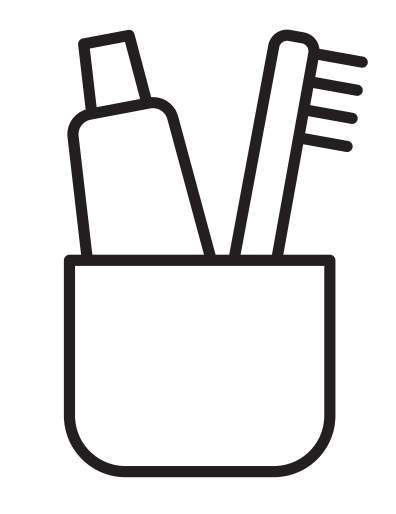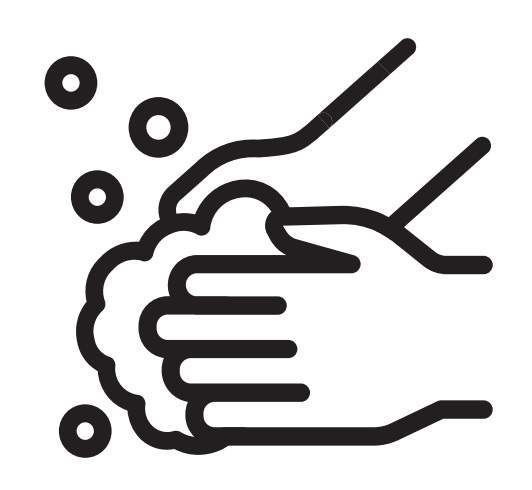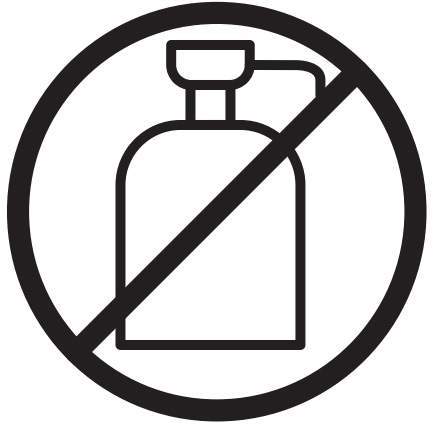Methods of infection prevention and the importance of self-education
By Rifaat Al-Nasser, Jordan News
last updated: Oct 18,2021

AMMAN — This week — October 17 to October 23 — marks International Infection Prevention Week, set forth by the Association for Professionals in Infection Control and Epidemiology. Last year’s theme was celebrating infection preventionists and their role in fighting COVID-19. This year, the theme is, “Make Your Intention Infection Prevention,” which highlights the science behind infection prevention and inspires a new generation of infection preventionists.
What is an infection?
A pathogen is an infectious agent or organism that enters the body and causes disease. It is a broad classification that can include living organisms such as bacteria, fungi, parasites, or non-living agents, such as viruses or prions.
Depending on the pathogen, the mode of transmission can vary. Bacteria, for example, can be transmitted through air, water, food, or other living organisms, also known as vectors. In recent history, certain bacteria strains have developed resistance to modern medicine (such as methicillin resistant Staphylococcus aureus (MRSA) and others are simply difficult to kill.
An example of this is Clostridium tetani, which manifests as tetanus. This bacterium can form spores which can live in soil and on inanimate objects for up to 40 years without the need of any sustenance. Once it enters the body, it begins reproducing. Viruses, on the other hand, may have higher infection rates, such as the Measles morbillivirus (MeV), or the measles virus.
Measles has such a high infectivity rate that 90 percent of non-immune individuals within proximity to an infected patient will contract the disease. Fortunately, with modern medicine and personal measures, the risk of infection can be minimized.
Personal hygiene
One of the most important and fundamental first steps in infection prevention is personal hygiene. Our skin is our body’s largest organ, hosting many bacteria. Bacteria that commonly exist on our skin are collectively known as normal flora. Maintaining a healthy level of normal flora on the skin is important as it helps prevent or slow down the colonization of other more harmful microorganisms.
Although a direct link between personal hygiene and infection has yet to be made, maintaining a high standard of personal hygiene reduces the levels of harmful bacteria such as Staphylococci. A high standard of personal hygiene calls for avoiding wearing jewelry, having short nails, maintaining shorter or tied hair as well as shorter facial hair, avoiding long sleeves, and dressing wounds properly.
Additionally, there are personal habits and techniques that can reduce the spread of disease and infections, primarily when discussing coughing or sneezing. When coughing or sneezing, our bodies expel water droplets that may carry pathogens. Avoid coughing or sneezing without covering your mouth. Similarly, avoid coughing or sneezing into your hands as pathogens may spread through direct contact, such as shaking hands or indirectly after touching common spaces such as door handles.
Practice coughing or sneezing into the crux of your elbow or tissue, ensuring that your mouth and nose are fully covered. If you sneeze or cough directly into your hands, try to wash your hands immediately without touching any surfaces.
Hand washing
Hand washing is likely the most important practice in reducing the spread of disease and infection. We use our hands for just about everything, which means they could carry harmful pathogens. Although our insides are mainly protected by our skin, some infections may enter through our body’s portals.
These portals include broken skin such as scrapes, burns, and cuts but more commonly our eyes, nose, and mouth. As such, it is important to avoid touching these areas with unwashed hands. Additionally, we should always wash our hands before, during, and after preparing food as well as before and after eating.
When caring for an ill individual or treating a wound, even your own, it is important to wash before and after. We should also wash our hands after using the restroom, changing diapers, blowing our nose, sneezing, coughing, dealing with animals including household pets, and disposing of garbage.
Overuse of antimicrobial agents
Antimicrobial agents are medicines, cleaning solutions, and sanitizers that are used to kill or inhibit the growth of microorganisms. While incorporating proper sanitization techniques reduces the spread of infection and improves general health, overusing antimicrobial agents can be harmful. A common example of this is in antibiotic use and development of antibiotic resistant strains of bacteria. Antibiotic resistance (AR) has become a topic of great concern within the last century. Many bacteria have become resistant to antibiotics, and as we develop stronger antibiotics to combat these resistant strains, they inevitably become resistant to newer generations of antibiotics.
What is largely to blame for the increased prevalence of AR strains of bacteria is antibiotic abuse and inappropriate use of antibiotics. Always consult your healthcare professional for a prescription. Follow the course as instructed and do not stop taking the medication until the course is finished even if your symptoms improve. Lastly, do not self-medicate, take leftover antibiotics when you feel sick, or solely consult a pharmacist.
It was found that 80.3 percent of Jordanians follow pharmacist counseling on antibiotics even though they have no authority to do so without lab work or a prescription. It is important to self-educate on these matters so as not to contribute to the problem.
Read more Health
(window.globalAmlAds = window.globalAmlAds || []).push('admixer_async_509089081')
(window.globalAmlAds = window.globalAmlAds || []).push('admixer_async_552628228')
Read More
Baking Soda for Skincare: Benefits and Safe Usage
Black Coffee Without Sugar: 7 Amazing Health Benefits
Hydration and Kidney Health: What Happens When You Don’t Drink Enough Water?
AMMAN — This week — October 17 to October 23 — marks International Infection Prevention Week, set forth by the Association for Professionals in Infection Control and Epidemiology. Last year’s theme was celebrating infection preventionists and their role in fighting COVID-19. This year, the theme is, “Make Your Intention Infection Prevention,” which highlights the science behind infection prevention and inspires a new generation of infection preventionists.
What is an infection?
A pathogen is an infectious agent or organism that enters the body and causes disease. It is a broad classification that can include living organisms such as bacteria, fungi, parasites, or non-living agents, such as viruses or prions.
Depending on the pathogen, the mode of transmission can vary. Bacteria, for example, can be transmitted through air, water, food, or other living organisms, also known as vectors. In recent history, certain bacteria strains have developed resistance to modern medicine (such as methicillin resistant Staphylococcus aureus (MRSA) and others are simply difficult to kill.
An example of this is Clostridium tetani, which manifests as tetanus. This bacterium can form spores which can live in soil and on inanimate objects for up to 40 years without the need of any sustenance. Once it enters the body, it begins reproducing. Viruses, on the other hand, may have higher infection rates, such as the Measles morbillivirus (MeV), or the measles virus.
Measles has such a high infectivity rate that 90 percent of non-immune individuals within proximity to an infected patient will contract the disease. Fortunately, with modern medicine and personal measures, the risk of infection can be minimized.
Personal hygiene

One of the most important and fundamental first steps in infection prevention is personal hygiene. Our skin is our body’s largest organ, hosting many bacteria. Bacteria that commonly exist on our skin are collectively known as normal flora. Maintaining a healthy level of normal flora on the skin is important as it helps prevent or slow down the colonization of other more harmful microorganisms.
Although a direct link between personal hygiene and infection has yet to be made, maintaining a high standard of personal hygiene reduces the levels of harmful bacteria such as Staphylococci. A high standard of personal hygiene calls for avoiding wearing jewelry, having short nails, maintaining shorter or tied hair as well as shorter facial hair, avoiding long sleeves, and dressing wounds properly.
Additionally, there are personal habits and techniques that can reduce the spread of disease and infections, primarily when discussing coughing or sneezing. When coughing or sneezing, our bodies expel water droplets that may carry pathogens. Avoid coughing or sneezing without covering your mouth. Similarly, avoid coughing or sneezing into your hands as pathogens may spread through direct contact, such as shaking hands or indirectly after touching common spaces such as door handles.
Practice coughing or sneezing into the crux of your elbow or tissue, ensuring that your mouth and nose are fully covered. If you sneeze or cough directly into your hands, try to wash your hands immediately without touching any surfaces.
Hand washing

Hand washing is likely the most important practice in reducing the spread of disease and infection. We use our hands for just about everything, which means they could carry harmful pathogens. Although our insides are mainly protected by our skin, some infections may enter through our body’s portals.
These portals include broken skin such as scrapes, burns, and cuts but more commonly our eyes, nose, and mouth. As such, it is important to avoid touching these areas with unwashed hands. Additionally, we should always wash our hands before, during, and after preparing food as well as before and after eating.
When caring for an ill individual or treating a wound, even your own, it is important to wash before and after. We should also wash our hands after using the restroom, changing diapers, blowing our nose, sneezing, coughing, dealing with animals including household pets, and disposing of garbage.
Overuse of antimicrobial agents

Antimicrobial agents are medicines, cleaning solutions, and sanitizers that are used to kill or inhibit the growth of microorganisms. While incorporating proper sanitization techniques reduces the spread of infection and improves general health, overusing antimicrobial agents can be harmful. A common example of this is in antibiotic use and development of antibiotic resistant strains of bacteria. Antibiotic resistance (AR) has become a topic of great concern within the last century. Many bacteria have become resistant to antibiotics, and as we develop stronger antibiotics to combat these resistant strains, they inevitably become resistant to newer generations of antibiotics.
What is largely to blame for the increased prevalence of AR strains of bacteria is antibiotic abuse and inappropriate use of antibiotics. Always consult your healthcare professional for a prescription. Follow the course as instructed and do not stop taking the medication until the course is finished even if your symptoms improve. Lastly, do not self-medicate, take leftover antibiotics when you feel sick, or solely consult a pharmacist.
It was found that 80.3 percent of Jordanians follow pharmacist counseling on antibiotics even though they have no authority to do so without lab work or a prescription. It is important to self-educate on these matters so as not to contribute to the problem.
Read more Health
What is an infection?
A pathogen is an infectious agent or organism that enters the body and causes disease. It is a broad classification that can include living organisms such as bacteria, fungi, parasites, or non-living agents, such as viruses or prions.
Depending on the pathogen, the mode of transmission can vary. Bacteria, for example, can be transmitted through air, water, food, or other living organisms, also known as vectors. In recent history, certain bacteria strains have developed resistance to modern medicine (such as methicillin resistant Staphylococcus aureus (MRSA) and others are simply difficult to kill.
An example of this is Clostridium tetani, which manifests as tetanus. This bacterium can form spores which can live in soil and on inanimate objects for up to 40 years without the need of any sustenance. Once it enters the body, it begins reproducing. Viruses, on the other hand, may have higher infection rates, such as the Measles morbillivirus (MeV), or the measles virus.
Measles has such a high infectivity rate that 90 percent of non-immune individuals within proximity to an infected patient will contract the disease. Fortunately, with modern medicine and personal measures, the risk of infection can be minimized.
Personal hygiene

One of the most important and fundamental first steps in infection prevention is personal hygiene. Our skin is our body’s largest organ, hosting many bacteria. Bacteria that commonly exist on our skin are collectively known as normal flora. Maintaining a healthy level of normal flora on the skin is important as it helps prevent or slow down the colonization of other more harmful microorganisms.
Although a direct link between personal hygiene and infection has yet to be made, maintaining a high standard of personal hygiene reduces the levels of harmful bacteria such as Staphylococci. A high standard of personal hygiene calls for avoiding wearing jewelry, having short nails, maintaining shorter or tied hair as well as shorter facial hair, avoiding long sleeves, and dressing wounds properly.
Additionally, there are personal habits and techniques that can reduce the spread of disease and infections, primarily when discussing coughing or sneezing. When coughing or sneezing, our bodies expel water droplets that may carry pathogens. Avoid coughing or sneezing without covering your mouth. Similarly, avoid coughing or sneezing into your hands as pathogens may spread through direct contact, such as shaking hands or indirectly after touching common spaces such as door handles.
Practice coughing or sneezing into the crux of your elbow or tissue, ensuring that your mouth and nose are fully covered. If you sneeze or cough directly into your hands, try to wash your hands immediately without touching any surfaces.
Hand washing

Hand washing is likely the most important practice in reducing the spread of disease and infection. We use our hands for just about everything, which means they could carry harmful pathogens. Although our insides are mainly protected by our skin, some infections may enter through our body’s portals.
These portals include broken skin such as scrapes, burns, and cuts but more commonly our eyes, nose, and mouth. As such, it is important to avoid touching these areas with unwashed hands. Additionally, we should always wash our hands before, during, and after preparing food as well as before and after eating.
When caring for an ill individual or treating a wound, even your own, it is important to wash before and after. We should also wash our hands after using the restroom, changing diapers, blowing our nose, sneezing, coughing, dealing with animals including household pets, and disposing of garbage.
Overuse of antimicrobial agents

Antimicrobial agents are medicines, cleaning solutions, and sanitizers that are used to kill or inhibit the growth of microorganisms. While incorporating proper sanitization techniques reduces the spread of infection and improves general health, overusing antimicrobial agents can be harmful. A common example of this is in antibiotic use and development of antibiotic resistant strains of bacteria. Antibiotic resistance (AR) has become a topic of great concern within the last century. Many bacteria have become resistant to antibiotics, and as we develop stronger antibiotics to combat these resistant strains, they inevitably become resistant to newer generations of antibiotics.
What is largely to blame for the increased prevalence of AR strains of bacteria is antibiotic abuse and inappropriate use of antibiotics. Always consult your healthcare professional for a prescription. Follow the course as instructed and do not stop taking the medication until the course is finished even if your symptoms improve. Lastly, do not self-medicate, take leftover antibiotics when you feel sick, or solely consult a pharmacist.
It was found that 80.3 percent of Jordanians follow pharmacist counseling on antibiotics even though they have no authority to do so without lab work or a prescription. It is important to self-educate on these matters so as not to contribute to the problem.
Read more Health

